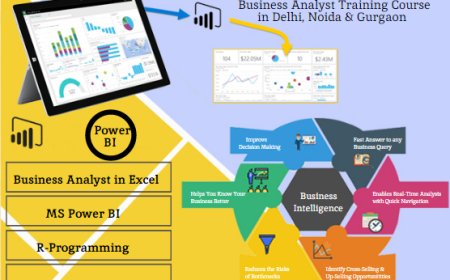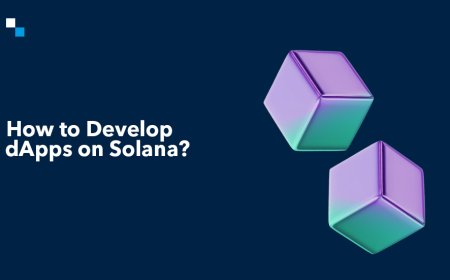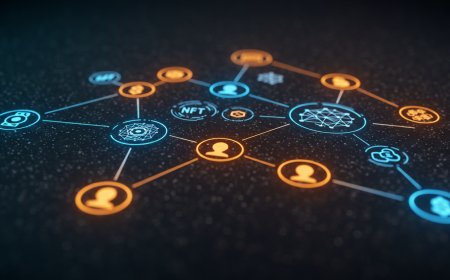Engineering Intelligence: The Craft Behind Training Large Language Models
This article breaks down the engineering behind Large Language Model (LLM) development—from architectural design and dataset curation to training infrastructure, alignment, and deployment. It explores the technical challenges, tools, and workflows involved in building scalable.
In the age of generative AI, Large Language Models (LLMs) have become the brainpower behind digital transformation. These models complete sentences, write code, summarize articles, and even mimic human conversation. But behind their impressive output lies a blend of science and engineering, precision and experimentation. Training an LLM is not just a computational featits a craft.

This article takes you inside the development pipeline of LLMs, exploring how teams of engineers, researchers, and data scientists build, tune, and scale the minds of modern machines.
1.Designing the Blueprint: Architecting the Model
Before a single token is processed, LLM development begins with a question: How big, how deep, and how smart should the model be?
Engineers choose the models architecturemost commonly a Transformer with multiple layers, attention heads, and billions of parameters. Each design choice influences how well the model can learn language patterns and represent meaning.
Key decisions include:
-
Number of parameters (scale)
-
Token context window (memory)
-
Activation and normalization techniques
-
Layer depth and parallelism strategies
The blueprint sets the stage for everything that followsfrom training costs to downstream performance.
2.Feeding the Model: Curating Data at Scale
LLMs are only as good as the data they learn from. The next step is to gather massive, high-quality datasets, often in the trillions of tokens. Engineers aggregate data from:
-
Web archives (e.g., Common Crawl)
-
Books, news, and encyclopedias
-
Technical content like Stack Overflow or GitHub
-
Filtered forums and multilingual corpora
Cleaning this data is both art and science. It involves:
-
Removing duplicates and spam
-
Filtering offensive or biased language
-
Balancing diverse topics and writing styles
-
Tokenizing into a format the model can learn from
Effective data curation ensures the model learns fluency, logic, and relevancenot noise.
3.Training the Model: A Marathon of Computation
With data and architecture in place, the training phase begins. This involves feeding token sequences into the model and teaching it to predict the next tokenover and over, across billions of examples.
Challenges at this stage include:
-
Distributed training across thousands of GPUs or TPUs
-
Memory efficiency using techniques like gradient checkpointing
-
Mixed precision to optimize performance and reduce cost
-
Model parallelism, splitting the model across hardware nodes
Training a frontier LLM can take weeks, cost millions of dollars, and require careful orchestration to prevent crashes or divergence.
4.Aligning Intelligence: Making the Model Helpful and Safe
After pretraining, the model is fluentbut raw. It knows how to write and speak, but not necessarily how to follow instructions or behave responsibly. This is where alignment comes in.
Techniques used:
-
Instruction tuning: Teaching the model how to follow specific prompts
-
Supervised fine-tuning: Using labeled examples for targeted behaviors
-
Reinforcement Learning from Human Feedback (RLHF): Guiding the model through human preferences and rewards
-
Safety tuning: Reducing harmful, biased, or manipulative outputs
Alignment is crucial for trust. It turns a model from a probability engine into a conversational partner or coding assistant.
5.Evaluating and Iterating: Testing the Model in the Real World
Once trained and aligned, the model is evaluated across several dimensions:
-
Accuracy and coherence
-
Factual consistency
-
Instruction-following ability
-
Hallucination frequency
-
Bias and fairness
Testing includes benchmark datasets (e.g., MMLU, HellaSwag), internal tests, and red-teaming to simulate adversarial prompts. Results feed back into further fine-tuning or safety adjustments.
Deployment is not the endits a checkpoint in a continuous improvement loop.
6.The Hidden Engineering: Tooling, Monitoring, and Ops
Behind every LLM is an ecosystem of tools:
-
Data pipelines to collect and stream massive datasets
-
Experiment trackers to log training progress
-
Monitoring dashboards for model behavior in production
-
Inference optimizers to serve models efficiently (e.g., vLLM, Triton)
These systems ensure models remain stable, reproducible, and performantespecially under real-world traffic.
LLM development isn't just about machine learning. It's full-stack engineering at internet scale.
7.Looking Forward: Smarter, Safer, and More Specialized Models
The future of LLM development is already taking shape:
-
Specialized models for domains like law, medicine, and finance
-
Multimodal LLMs that integrate text, images, and speech
-
Personalized AI with on-device tuning and private memory
-
Agentic systems where LLMs plan, reason, and act autonomously
Open-source innovations (Mistral, Phi-3, LLaMA) are also enabling more people to build LLMsdemocratizing the intelligence layer of the internet.
Conclusion: Engineering Intelligence Is a Team Sport
Building an LLM is not a one-shot process. Its the coordinated effort of architects, engineers, researchers, ethicists, and users. Every token predicted is the product of thousands of design choices, terabytes of data, and countless iterations.
LLM development is where language meets logic, and where code becomes cognition. As we continue refining these systems, the craft behind them will only become more importantand more impactful.




















